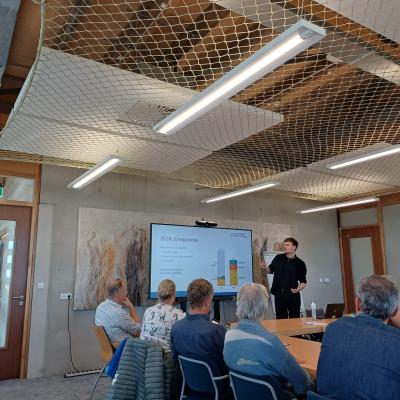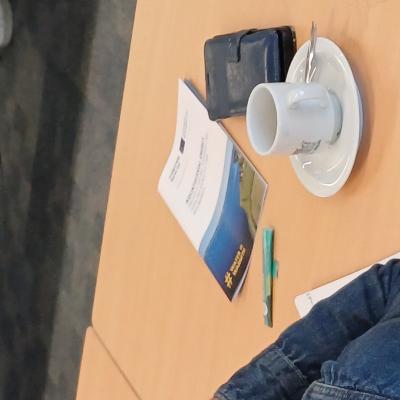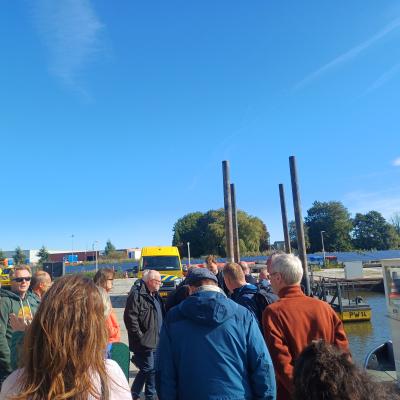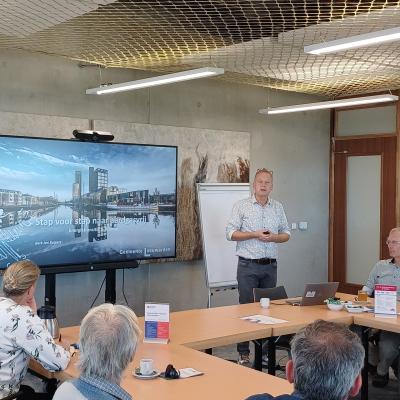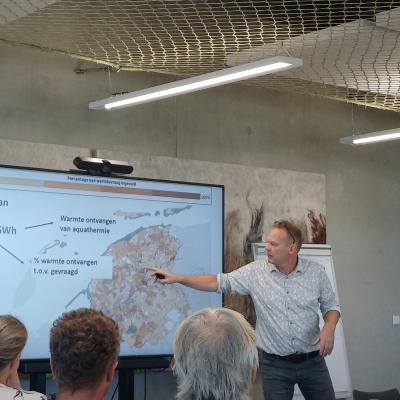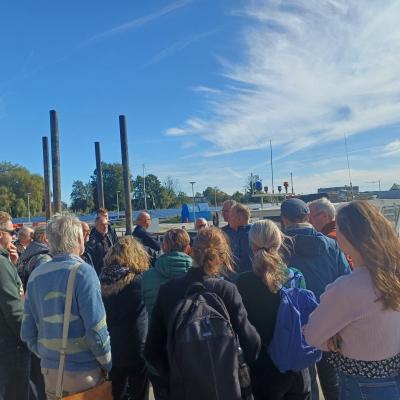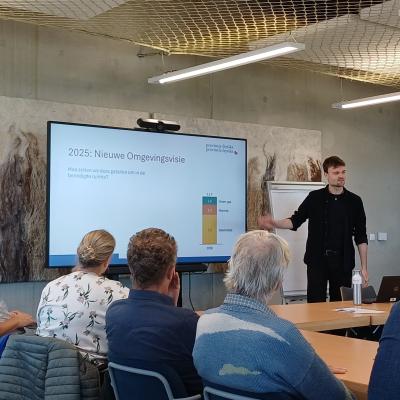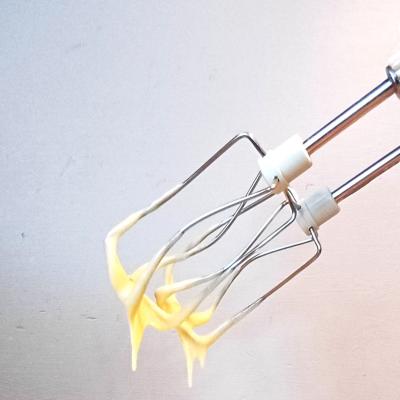That our landscape is changing due to sustainable energy is a fact. But how it will look in the future, we do not yet know.
Spatial planners from Flanders (VRP) visited Fryslân 25 September 2025 to see how we are handling the energy transition. Fryslâns challenges: How do you translate energy ambitions into spatial choices? Which energy sources require the most space? And how do you deal with grid congestion, ownership, and governance?
Corné Nauta (Province of Fryslân) presented the Frisian Energy Vision 2024. Fryslân aims to be energy-neutral by 2050. By 2030, energy consumption must be reduced by 25% compared to 2010, and one-third of the remaining energy demand must be generated sustainably. These targets have been translated into spatial terms:
- Green gas: 0.3 TWh now, potential up to 2 TWh.
- Heat: 0.94 TWh now, potential up to 2.5 TWh.
- Electricity: the biggest challenge. Meeting demand with solar energy alone would require 7,500 hectares of solar panels, or about 500 wind turbines if relying only on wind.
Electricity generation takes by far the most space, and the land needed for transport and storage is also considerable. Wind energy holds great potential: the larger the turbines, the fewer are needed. However, they are highly visible, and their ecological impact remains uncertain. Less visible technologies such as geothermal-, aquathermal energy, and waste heat offer additional opportunities. Ultimately, an energy mix will best match supply and demand, location, and energy type. Already, new housing developments, business parks, and transport plans are being designed with energy supply in mind.
It’s a transition, and energy planning is new to us — we base our decisions on forecasts and calculations. As we move forward, we are discovering what our goals truly mean for public space. Plans are dynamic, because there’s still so much we don’t know.
Municipality of Leeuwarden
Leeuwarden also has major ambitions. Gerk-Jan Kuipers explained how the municipality intends to go completely off gas. The Belgian company Extraqt, also a partner in the WaterWarmth project, explored where the greatest potential lies. This resulted in detailed potential maps showing that a mix of energy sources is essential for affordability and reliability.
However, Leeuwarden also faces issues with grid congestion. To ensure everyone has access to electricity in the future, dozens of new substations will appear across the landscape. The municipality is also considering establishing a public heating company — part of a broader trend where more heating networks are being publicly managed.
The Flemish planners asked how residents and businesses are involved in this process. They also wondered whether increasing comfort is becoming an energy drain — saving energy on one hand, but demanding more due to higher living standards on the other. They found it hard to imagine large solar fields, since in Flanders, solar panels are typically placed on rooftops. Governance and ownership turned out to be topics handled very differently across Europe.
On the road to 2050
The path to energy neutrality is not a straight line but a journey filled with milestones and adjustments. There is every reason for optimism: businesses are eager to participate, projects like WaterWarmth demonstrate that solutions are already viable, and cross-border collaboration brings new perspectives. Above all, sometimes you just have to start.

